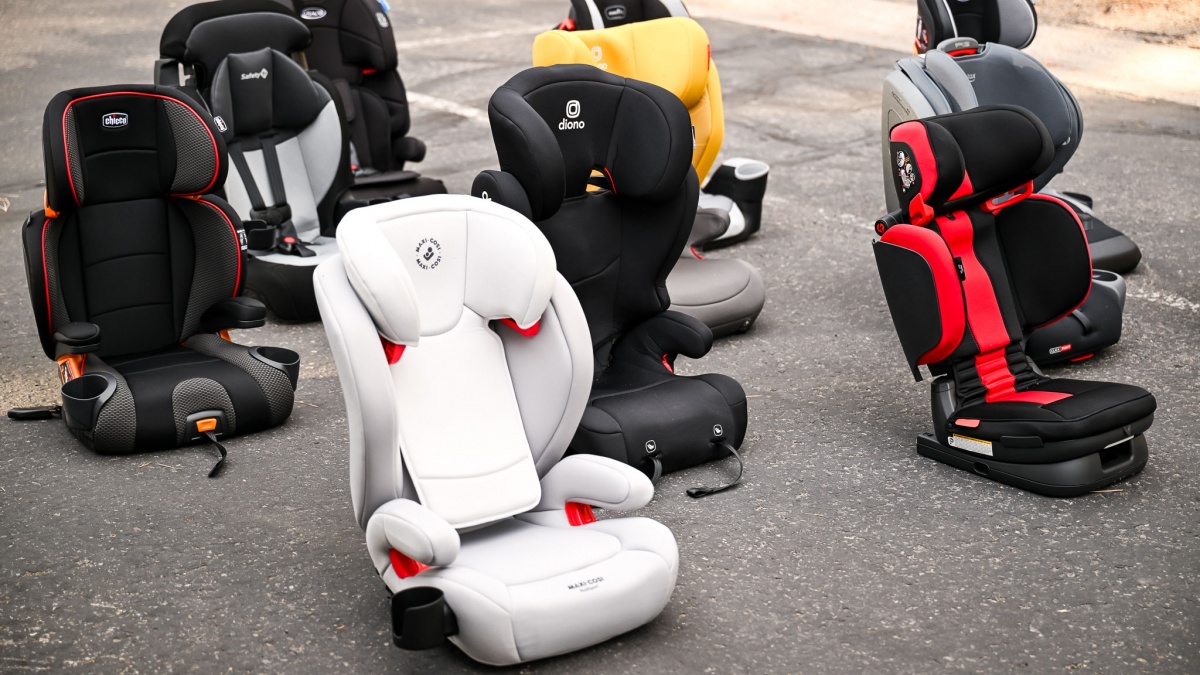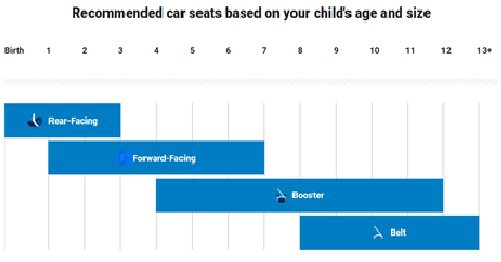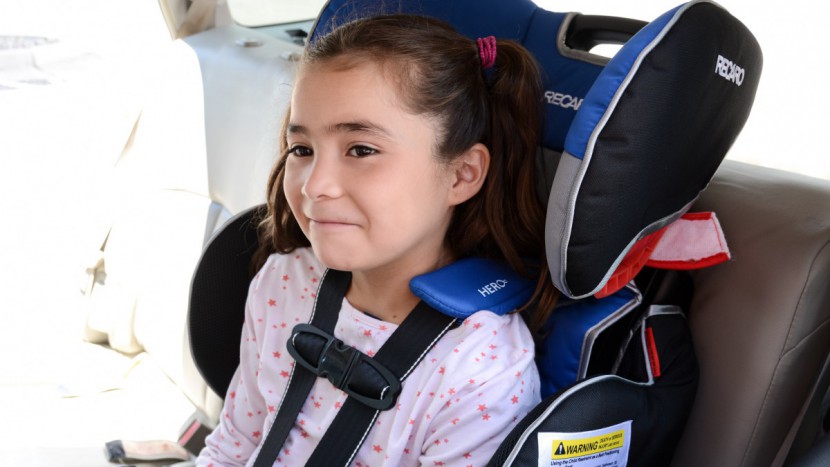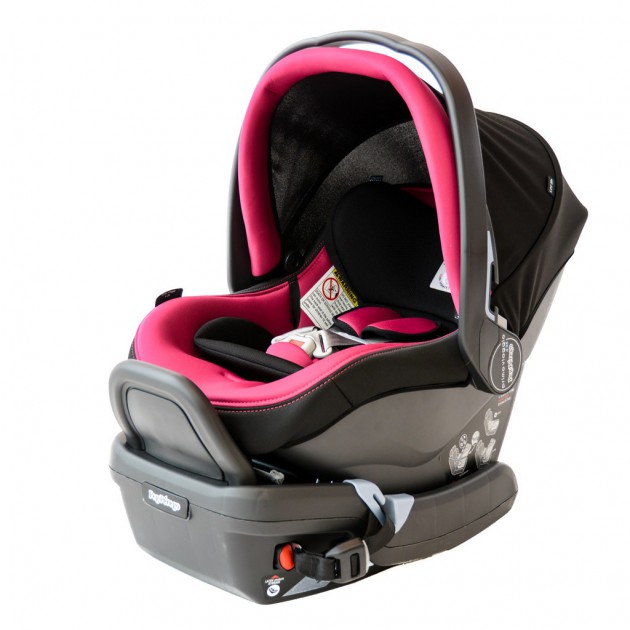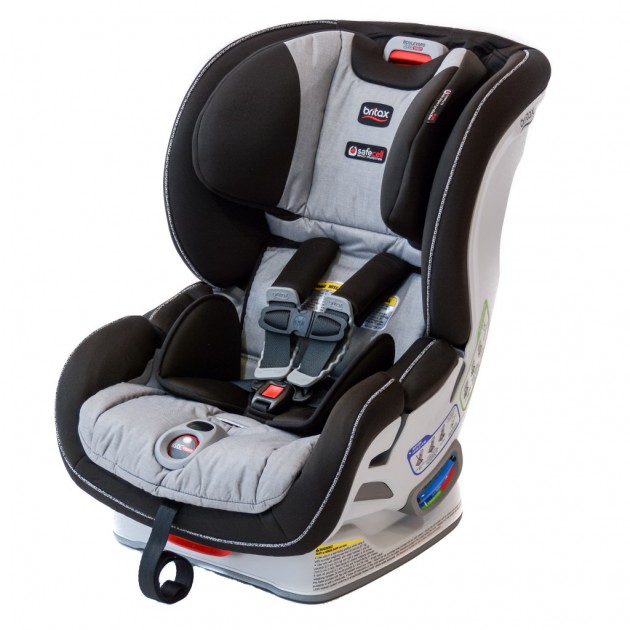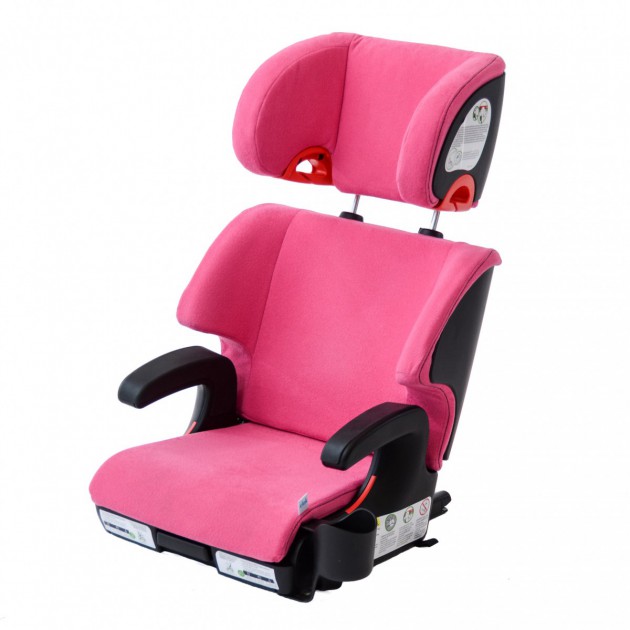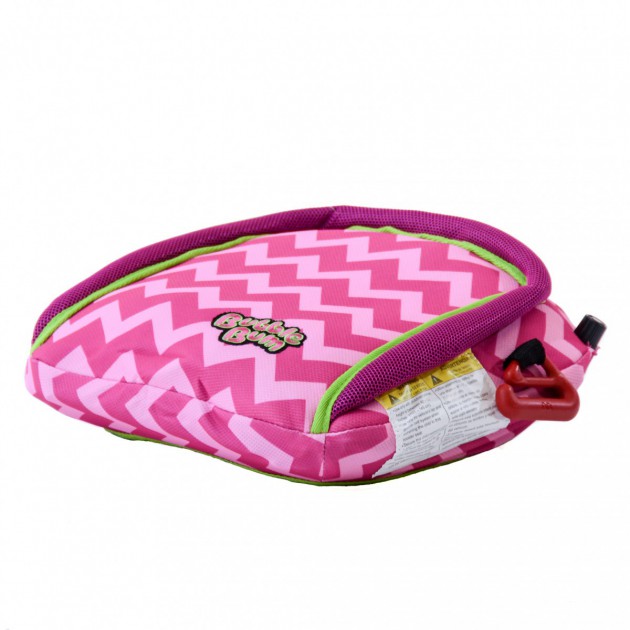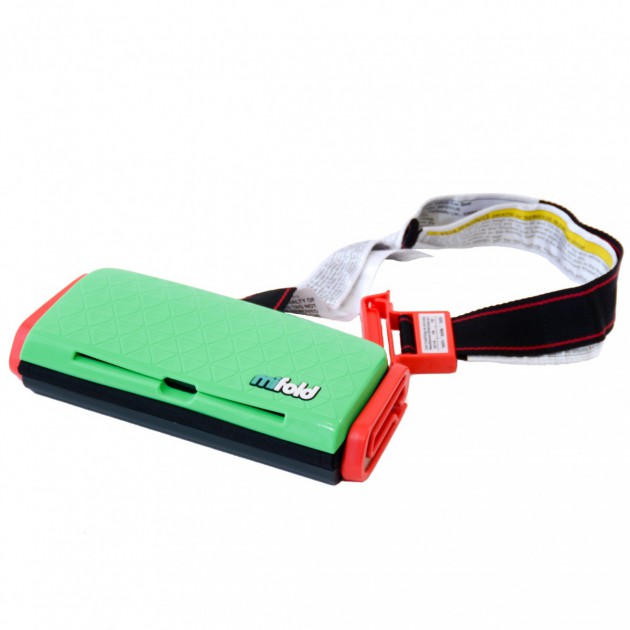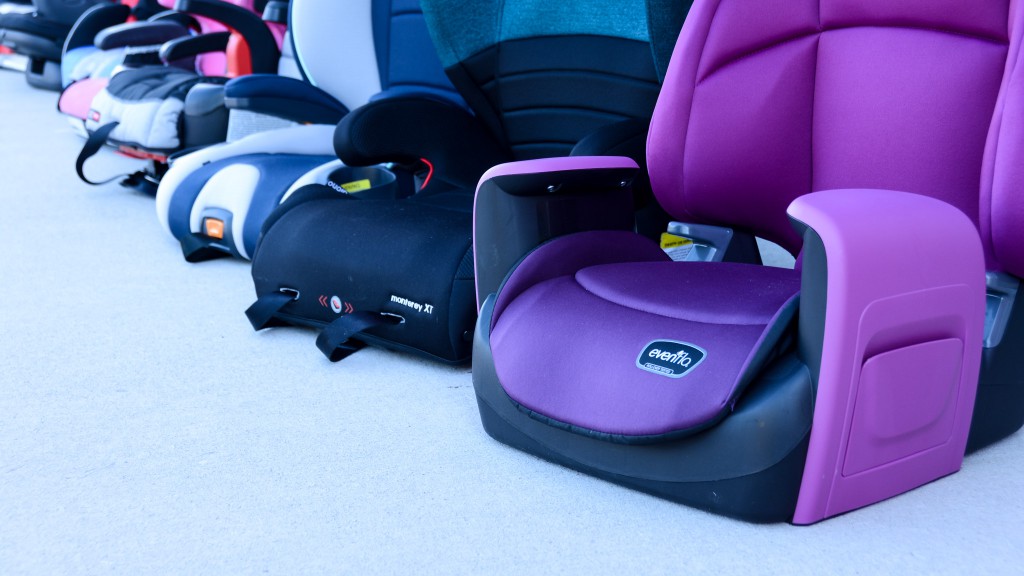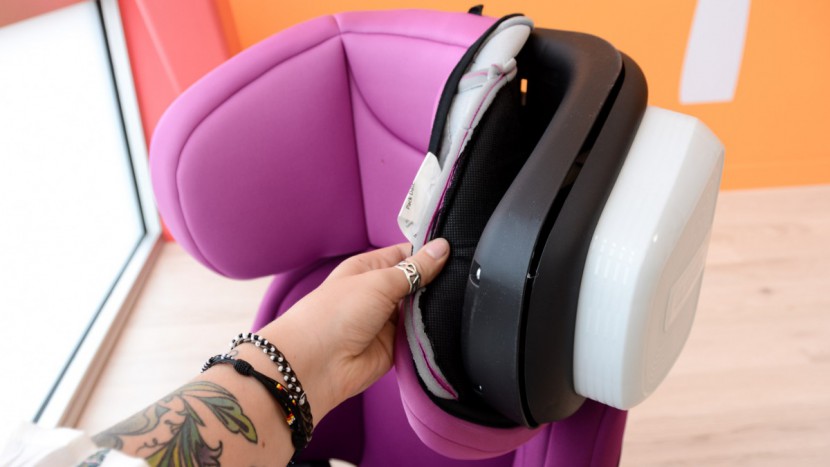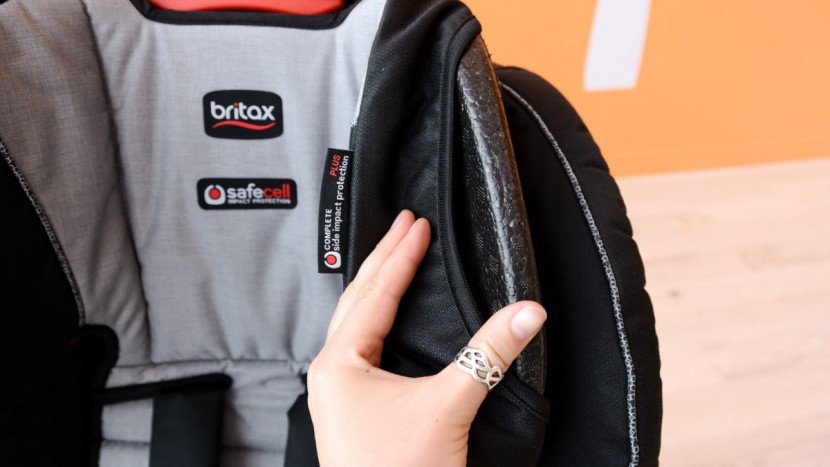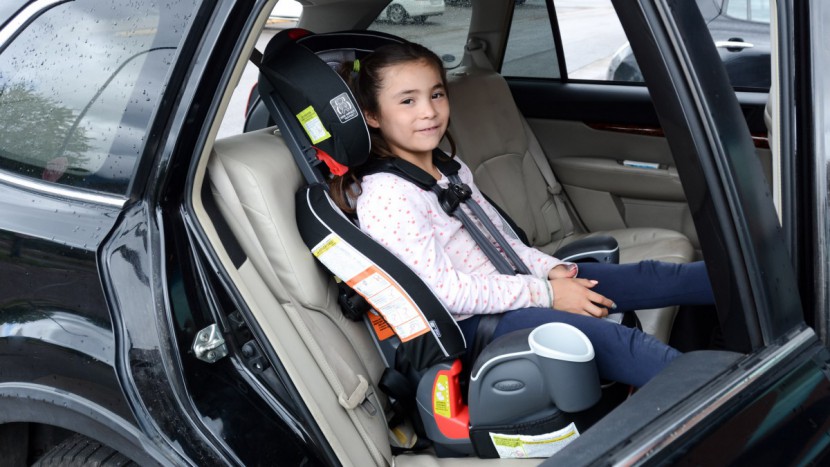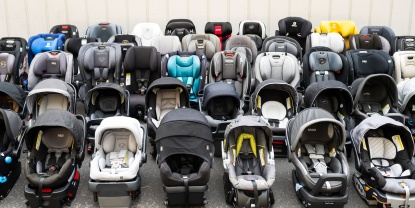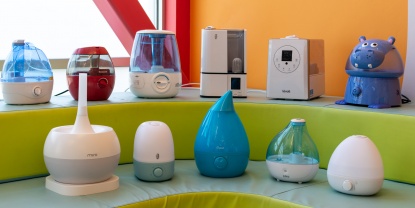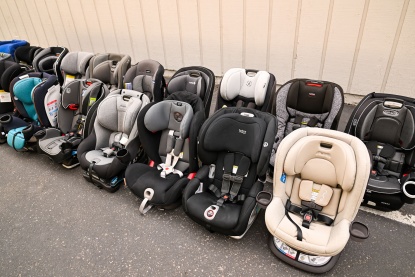We bought and tested popular booster seats to determine why one seat is better and which features and functions are helpful or easy to operate. This buying advice guide is structured to help families assess their specific booster needs by offering general information and guidance about booster seats and why some options are better than others.
We recommend reading our full review of booster seats to learn which products performed well and why. Using this buying guide in conjunction with the full review will provide you with all the information you need to make an informed buying decision. Still unsure? Check out our favorite car seats across all car seat categories.
Why Buy a Booster Seat?
Studies show it is essential to keep little ones in the correct safety seat for as long as the manufacturer of the seat recommends and rear-facing if possible, according to the user manual. For some convertible car seats, this can mean until children are 65 lbs or more. However, at some point, your child will outgrow their convertible car seat and graduate into a booster seat as required by Federal law. According to the law, children can start using a booster seat at four years of age and 40 lbs.National Highway Transportation Safety Administration (NHTSA) recommendsthat children stay in their convertible seat with 5-point harness as long as they fall within the weight and height limitations outlined by the manufacturer. For this reason, we recommend keeping children in their convertible seats until they outgrow them, even if they meet the requirements for a booster before then.
Do not be in a rush to switch to a booster seat, as your child's convertible seat offers more protection thanks to the 5-point harness and overall structure. Wait until they reach the maximum height or weight allowed by the convertible car seat manufacturer. Children should not transition out of a booster seat until they turn eight, weigh more than 80 lbs, or are taller than 4 feet 9 inches at a minimum. As long as they fall within the limits of the booster, it is safer to use them than to go without one. Some boosters in this review can work up to 110+ lbs and 57"+ tall (or 4'9"). The Diono Monterey XT has the tallest height limit of 63". If your child is taller than most, they may reach the height limit before the weight (see below).
Height and Weight Limits
It is important to pay attention to the height and weight restrictions of your booster. Each has varying limits that depend on several factors, including if the booster is used with or without the back, with or without the 5-point harness (if it has one), and whether or not it uses LATCH (if it has one). Each booster in this review will work when your child is at least 40 lbs, some of the boosters will work using a 5-point harness at lower weights, and all of the options we tested work up to at least 100 lbs, with some up to 120 lbs. The most important thing to remember is that the ranges vary, and you should regularly check your user's manual when making changes to the booster's configuration to ensure that your child remains as safe as possible.
While it can be easier for parents to monitor their child's weight, children will often reach the height limit of a seat before the weight limit. It is just as important to monitor your child's height as their weight. Height will affect the adjustment of the headrest and shoulder strap and when your child has outgrown their booster. Once they reach the maximum height restriction of the booster or 4'9", the booster seat can be retired, and they can move on to a properly adjusted vehicle seat. If you want to keep them in a booster as long as possible for safety, the Diono Monterey XT has the tallest height limit at 63".
Types of Safety Seats
There are three types of safety seats: the infant car seat, the convertible car seat, and the booster seat. An infant seat is for use from birth up to about 9-12 months, depending on the size of your baby. A convertible car seat can work rear and forward-facing with weight limits of around 65 lbs (though some are higher).
A booster seat can work after your child turns 4 or 40 lbs and is suitable until weight limits near 100+ lbs. Each safety seat is a must-have for different stages of your child's development, and a booster seat is no exception. In fact, by law, you must use a booster, and you should not overlook it for convenience's sake.
Booster Seats
Booster seats are designed to help position smaller passengers, so the vehicle belt crosses the strongest part of their body. Most include the benefit of raising the child's head above the door frame, which potentially increases protection from head injuries related to the intrusion of the door into the car due to a side-impact collision.
A seat belt fits properly when the lap belt lies snugly across your child's upper thighs, not their hips or stomach. The shoulder belt should rest snugly (but comfortably) across the shoulder and chest. It should not cross the neck or face and should not travel under the shoulder across the armpit. For most children under 4 ft 10 in, proper seatbelt alignment requires a booster.
Boosters come in three basic varieties, a high-backed booster (above left), backless (above middle), and belt-positioning (above right). While a belt-positioning device is not technically a booster, as they don't “boost” children, we include one in this review because we understand that the size and weight make them an attractive choice for busy parents with limited space who travel or carpool often. It is also important to realize that many high-backed boosters can work without the back, making them virtually two products in one, which makes them a versatile solution that meets more than one need.
In general, we prefer high-back boosters. We believe it logically makes sense that this style is intrinsically safer thanks to the protection that the frame, shell, and headrest provide that isn't present in the backless booster or belt-positioner. While this theory is hard to test, we believe the frame and shell better protect little ones from side-impact collisions (like convertible car seat shells). As a result, we prefer the additional safety features found in the high-backed products. Also, to protect from the intrusion into your child's space of car parts or other objects that can result from a collision, we think the boosters with backs make more sense. We also prefer backless boosters over belt positioners because belt positioners fail to boost children up and clear of the door frame.
Know the Basics
All of the boosters in this review (and others available in the US) meet or exceed Federal safety requirements. But, they are not all equal in their function, features, safety, or ease of use. Here we cover the features and performance results you may want to consider when choosing which booster to purchase.
Crash Tests
Crash test results are critical to the performance of boosters and can be instrumental in helping you differentiate between options. Every booster must comply with a Federal crash test safety standard, and the NHTSA randomly chooses products for testing each year. The chosen boosters are crash-tested in a facility designed to simulate a 30-mile-per-hour head-on collision using a crash sled and crash test dummy. The test collects G-force data in sensors located in the test dummy's head and chest. The sensors measure and record the amount of force exerted on the head and chest, and the information is utilized to estimate the potential for injury using each booster.
Because all of the boosters for sale in the US must pass the Federal requirements, all of the products we tested can be considered safe. Some products, however, pass the test with better results indicating (in our mind) an additional level of protection. The ten booster seats in this review were tested in the same facility that NHTSA uses, using the same methods and style of the dummy. This test method provides us with the data we need to analyze them side-by-side to compare each seat to the others and the Federal maximum allowable G-forces.
Some of the boosters in this review include LATCH connectors to secure the booster to the car. For some, this is for use in combination with the 5-point harness. It is also a way of securing the booster to the car, so it isn't free-floating when the booster is not in use. For safety, it is important that boosters not be loose in the car to avoid injury related to impact from the booster hitting a human in the event of an accident. LATCH stands for Lower Anchors and Tethers for CHildren (LATCH). This connection is easy and simple; you should use it if available. If it is not available, you should always secure the booster to the car using the vehicle belt when not in use to avoid potential injury.
We gave higher scores to the boosters with lower levels of recorded G forces in their crash test dummy sensors. The assumption is that these products offer an extra margin of protection based on crash test results. We believe this should be a factor parents consider when deciding which seat to purchase.
Side Impact Protection (SIP) Claims: Buyer Beware
Because there is no agreed-upon definition of SIP, we can't precisely say what individual claims of SIP mean for each manufacturer. Clek offers more information on its website than any other we could find, but overall, data to support SIP claims is surprisingly lacking.
Currently, no standardized testing or common language agreement governs what SIP means, how to test it, or how to interpret the results for any safety seat. While many of the boosters in this review claim some kind of SIP protection, the term itself is somewhat nebulous. Because it is difficult or impossible to determine what manufacturers mean by SIP or what type of testing they have performed on their SIP features (if they did test them). Because there is no industry standard, we think consumers should remain skeptical about any SIP claims.
Additional safety is always a good thing, and we welcome logical, tested safety designs that improve products for your child's protection. However, we are concerned with what appears to be possible “Safety Washing” concerning the marketing of side impact features. Given the lack of an industry standard for SIP and the different definitions used by each manufacturer, any SIP claim requires that parents research to determine what the manufacturer means, whether the design has been tested, and how. This research is a big responsibility to put on parents. After extensive research, we can tell you the information is largely unavailable even if you take the time to look for it.
We think many manufacturers are using SIP as a marketing claim to increase product interest. Going forward, we would like to see an industry standard that forces manufacturers to provide information and test results to support their claims and for comparison. For this reason, we could not analyze or consider any SIP claims in our testing process.
Booster Construction
High-backed boosters are similar in construction to the backless options but with the addition of a back and headrest. Both have a plastic shell, hard foam for impact absorption, soft foam for comfort, and a fabric cover. But, the high-backed boosters have a back shell, and some have metal frame components or features designed to increase shell stability and potentially improve protection in the event of a crash (this isn't easy to prove in the current standard test). The high-backed boosters also have headrests, but the lack of clarification from the manufacturers makes it difficult for us to determine if the headrest designs truly improve safety or if they are strictly for comfort and positioning. We think the differences in booster materials and construction that really matter are those that impact crash test performance and comfort.
Shoulder Height Adjustment
The high-backed boosters locate the belt strap retainer in the headrest (above left). The headrest needs to be adjusted so that the vehicle belt crosses the body in the correct location. Some headrests are easier to adjust than others, but all are more straightforward than the retainer clips on the backless boosters. The backless boosters have a strap with a retainer clip (above right) that attaches to the bottom of the booster and allows the shoulder belt to cross the child's shoulders and chest at the right angle. This style was harder for passengers to manage, and the retainer moved periodically during use, making them seem less effective than the fixed retainers on the boosters with backs.
Weight
The weight of a booster seat can be important if you plan to use your booster frequently while traveling or for carpooling. Being able to carry, transport, and move a booster can be helpful if your child will be riding in cars other than your own or if you need to take it on a trip. The backless boosters are the lightest, weighing around 1 lb for the BubbleBum (above left).
Other Features
Often the devil is in the details, and the less obvious features of the boosters played a role in their overall performance.
Comfort
Namely, the headrest shape and depth, as well as the seat bottom depth, played a role in how comfortable the products were to our little testers. The deeper and narrower the headrest, the better it is for napping, and the deeper the seat bottom, the less likely it is for legs to dangle uncomfortably. Having armrests is also essential to passengers, and they ranked those options without rests lower than the competition for comfort. According to our testing tots, the Evenflo Spectrum is the most comfortable option, with armrests, a deep headrest, and ample seat bottom. The next highest scoring products included the Clek Oobr and Diono Monterey XT.
LATCH
Being able to secure a booster to the car via LATCH anchors is also a neat feature. It relieves you of the responsibility of remembering to buckle in an empty booster when you drive without little ones. Several options in this review have rigid LATCH systems.
5-Point Harness
The final cool thing to consider is a 5-point harness. While the 5-point harness is not on every product, it is safer than a vehicle belt, and some of the options in this review will work with the harness up to 65 lbs.
How do I decide which booster seat is best for my child?
With so many seemingly similar products to choose from, deciding which booster to choose can feel frustrating as you try to sort out their differences. We've broken down the decision-making process into smaller steps to help you determine what is most important about boosters so that you can find the best choice for you and your child. These steps can help you find the best fit, even if it isn't one of our high-ranking products.
Step 1: How and where you will use your booster
If your booster will sit in your back seat with only the occasional move for travel or into another car, the more substantial boosters may be acceptable. Unlike parents who need a booster that is easy for children to carry for after-school carpooling, weight is less of a consideration when the booster is unlikely to move. This fact means that high-backed boosters are an excellent place to start your search, and we prefer them because of the shell and frame components that indicate additional protection. Alternatively, moving the booster frequently, using public transportation, or carpooling will likely have you looking at a backless booster or at least a booster that can work without the back. These smaller and lighter boosters make them ideal for moving and carrying long distances.
Step 2: Safety
All of the products in this review passed the minimum requirements for crash testing as defined by Federal regulations. Therefore, they all have a basic level of protection. We ran our tests faster than the federal guidelines, and we used a different crash sled that better simulated modern vehicles. Some seats had significantly better crash test sensor data than others and can be considered as offering an extra margin of protection compared to other options.
In addition to their crash test results, we think the high-backed boosters are intrinsically safer because they provide a frame and shell with additional foam for protection compared to the backless boosters. For this reason, we prefer the boosters with backs for overall safety. Considering the crash test scores in conjunction with the booster-style will help you narrow your options to a few possible choices.
Step 3: Budget
You've considered whether or not you need to worry about moving or carrying your booster, you've chosen a few options with crash test scores and designs you feel meet your needs, and now you can consider your budget. While most of the top performers in our review were very budget-friendly, we recognize that budget is often a concern regarding baby gear. We feel driving safety is a big deal, and any safety seat you purchase should be the absolute best option you can afford. Luckily, as our crash tests show, spending more doesn't always translate into a better or even safer booster. All award winners in this review earned better crash test results, and several have below-average prices. These facts mean you can have a booster that offers an additional margin of protection while saving money at the same time.
Conclusion
Purchasing a booster seat doesn't have to be frustrating or confusing. With a few steps, you can narrow your options to one or two, which should have you well on your way to a final choice. This guide and our complete review will give you all the information you need to make a well-informed decision for your family. We think our award winners fill just about every need and budget, but there may be a non-award winner that better suits your style or desires. Now you have all the information you need to make the best decision for your child without frustration.

